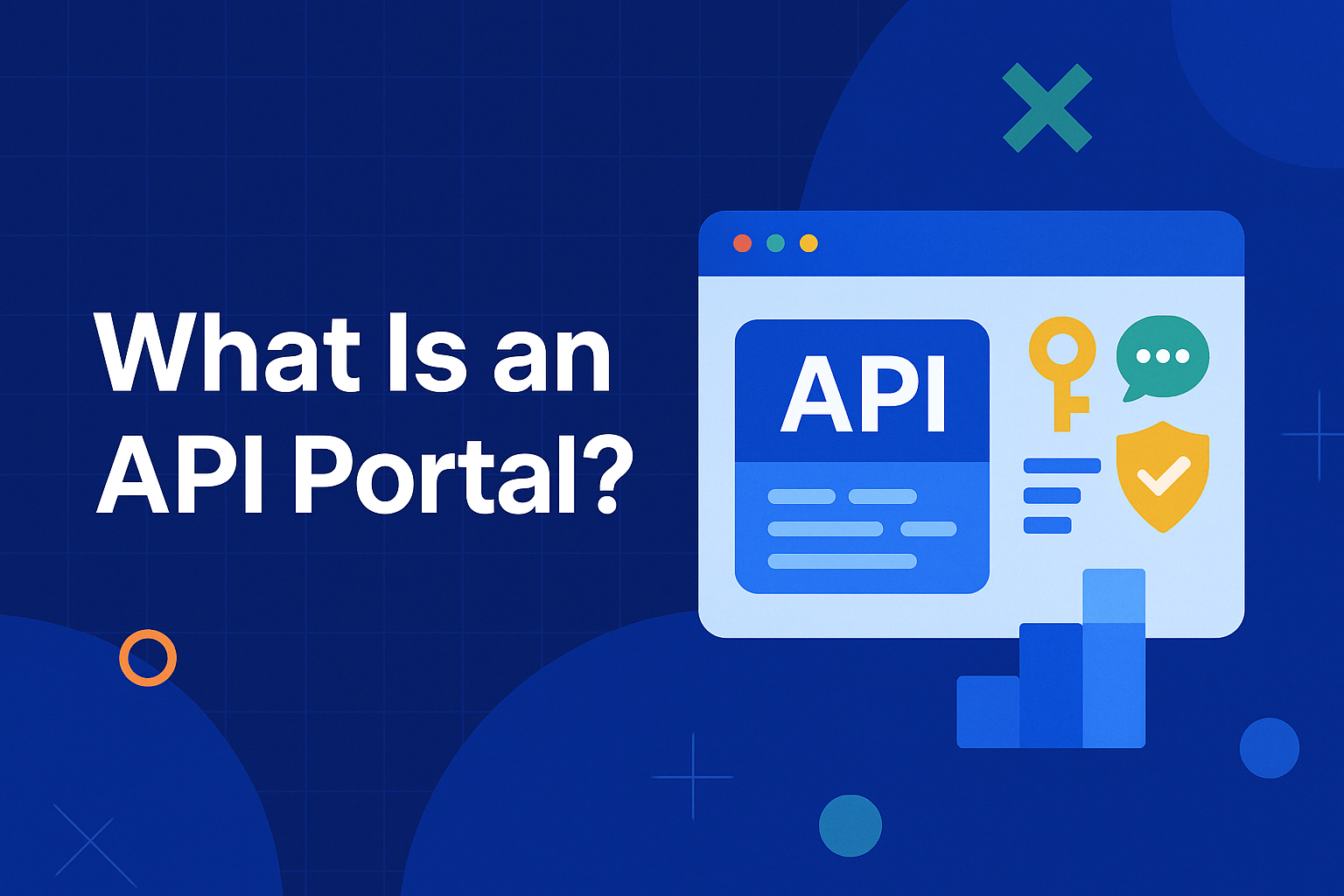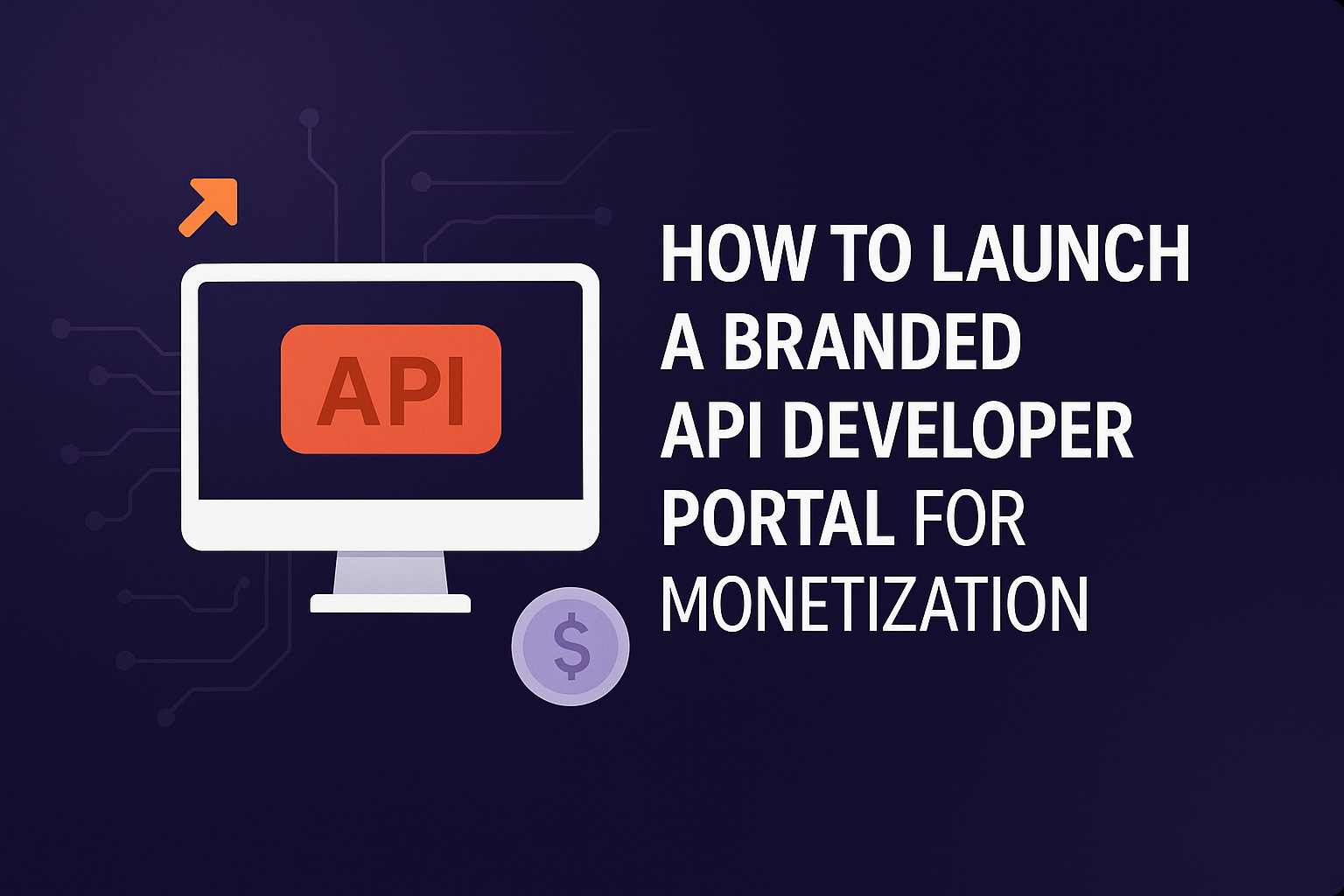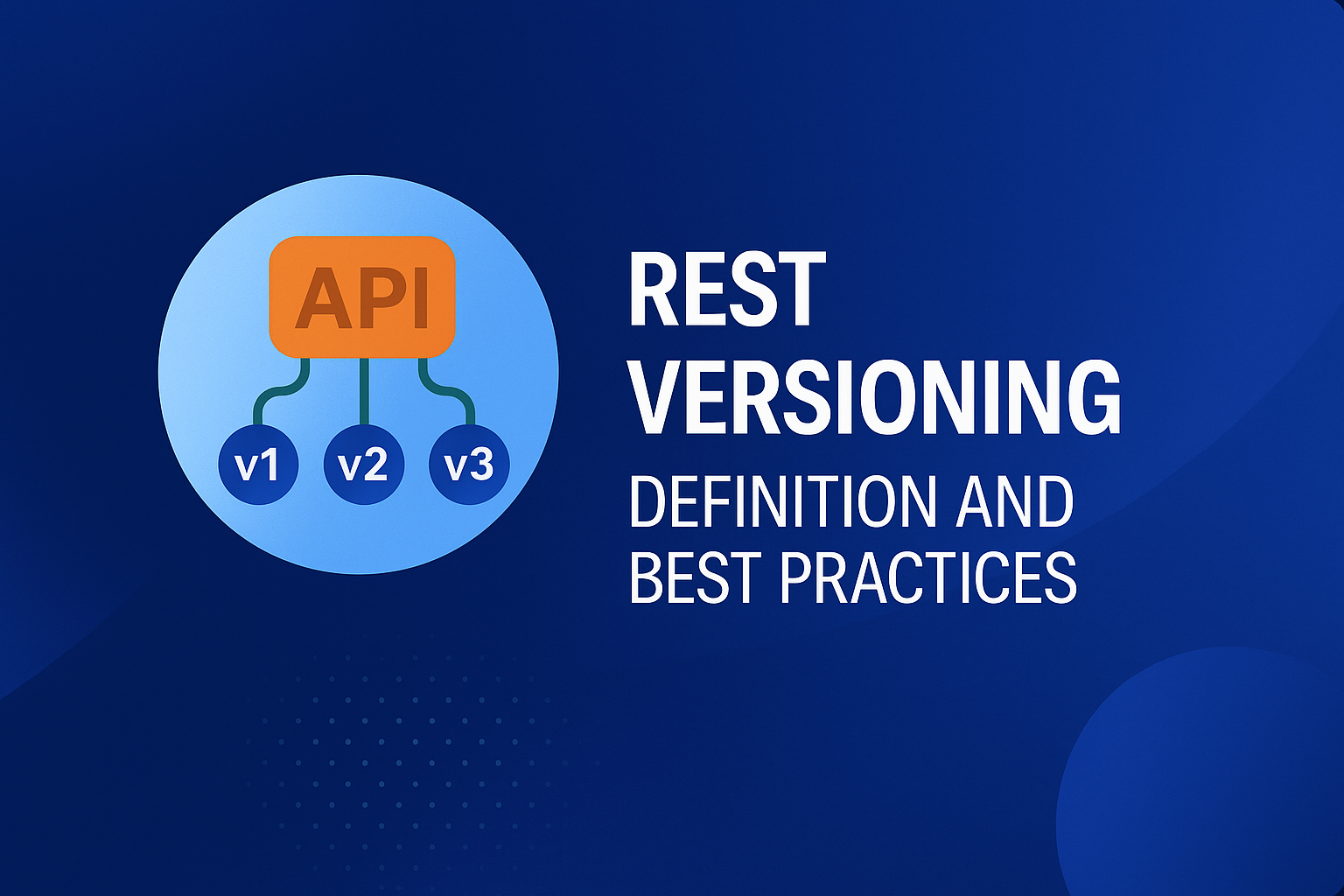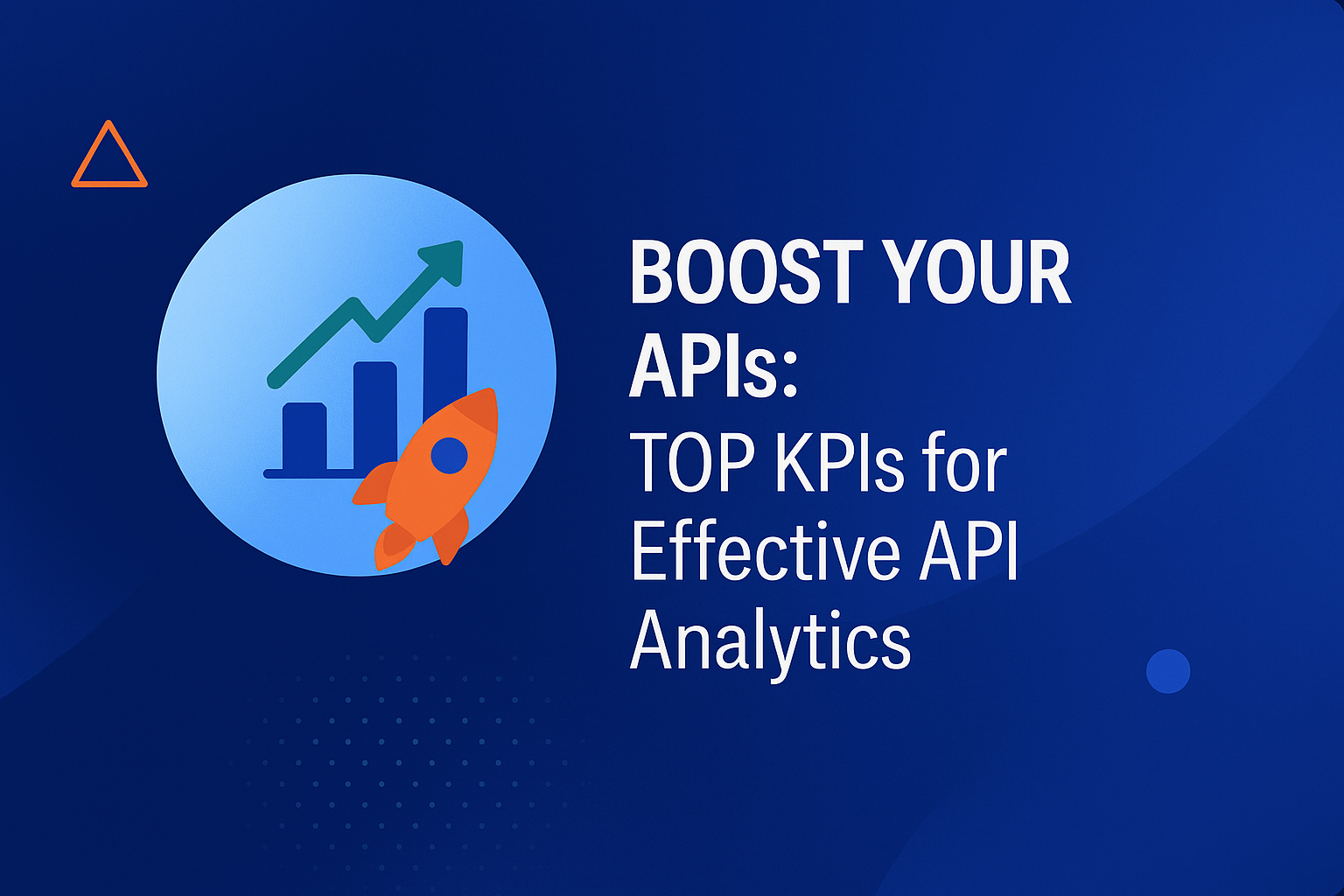
TL;DR
- Centralized hub: Discover, test, and integrate all your APIs from one unified portal.
- Developer-friendly: Interactive docs, sandboxes, SDKs, and code samples ready out of the box.
- Secure and controlled: Built-in API keys, OAuth, rate limits, and access management.
- Insights and analytics: Track usage, monitor performance, and optimize developer experience.
- Scalable and always up to date: Reduces support overhead while boosting adoption and revenue.
Launch your API portal today and turn your APIs into a seamless, revenue-generating experience.
You’ve built powerful APIs that are clean, functional, and ready to drive innovation. But developers still struggle to adopt them. Some can’t find your APIs, understand them, or, worse, use them incorrectly. Others can’t test them easily, and documentation is scattered.
You’re now grappling with missed adoption, fewer integrations, and poor API discoverability, which translates to massive revenue loss.
The good news? A well-built API portal can fix this by allowing you to showcase, document, and manage your APIs from discovery to consumption.
Let’s explore what an API portal is, why you need it, core features, and best practices to launch and scale your portal.
What is an API portal?
An API portal, also known as a developer portal, is a centralized, web-based hub where API providers publish their APIs and developers go to discover, learn about, and integrate them. It acts as a developer-friendly storefront, providing API documentation, SDKs, code samples, access keys, and testing environments in one place.
For API providers, a well-built API portal simplifies onboarding by offering a single point to publish APIs, manage access, educate users, and monitor usage. It helps reduce support overhead while promoting adoption within developer communities. You can grant access, generate client credentials, and even share a sandbox loaded with production-like data.
For API consumers (developer community), it’s a centralized hub to test, troubleshoot issues, interact with your APIs, and collaborate with peers.
They can register applications, test endpoints, explore detailed documentation, share feedback, and report issues, all without needing back-and-forth emails.

A brief history of API portals
Before API portals existed, developers often relied on shared documents or internal wikis to access API information—hardly ideal for usability or scale. Things began to shift between 2005 and 2010, as web APIs gained traction beyond internal teams.
Suddenly, there was a growing need for structured, accessible, and consistent documentation that third-party developers could easily understand and work with. This marked the birth of API portals.
By 2020, having a public-facing API portal became the standard for any company serious about external integrations. Over time, these portals evolved from static documentation sites into dynamic ecosystems.
Today, the best API portals do more than just explain how an API works. They help developers test endpoints, onboard quickly, manage keys, and even collaborate.
Looking ahead, API portals will likely continue to prioritize developer experience, blending self-service tools with smart personalization to support faster, smoother integration journeys.
Why you need an API portal
At their core, API portals are essential for streamlining API discovery, integration, and management. They serve as a centralized hub where API providers can showcase, manage, and monetize their APIs, while developers can easily explore, test, and consume them.
But their benefits go much deeper than convenience. Here’s why API portals are beneficial for providers and consumers (developers).
For API providers:
API portals offer various benefits such as:
Increase API adoption
An API, no matter how powerful, is useless if no one knows it exists or can figure out how to use it. API portals improve discoverability by organizing APIs in one place and showcasing them with clarity.
When developers can find an API quickly and get immediate access to its documentation and test environments, they’re far more likely to use it. This drives adoption naturally, without the need for aggressive promotion.
Improved developer experience
First impressions matter, and the developer experience is often the deciding factor for continued API usage. API portals simplify integration by offering detailed documentation, interactive tutorials, code snippets, and SDKs.
Monetization opportunities
An API portal can also be a business engine. Many modern portals support tiered access or usage-based pricing models.
This allows API providers to charge based on volume, features, or service level, which transforms APIs from backend tools into revenue-generating products.
API control and governance
With APIs, security and usage control are a top priority, and portals come with built-in tools to manage API keys, track usage analytics, enforce rate limits, and define access levels.
Besides protecting APIs from misuse, this ensures providers have a clear view of how their services are being consumed, which helps with compliance and scalability.
Developer feedback loop
An often-overlooked benefit of API portals is their role in facilitating two-way communication. Whether through integrated support systems, forums, or comment threads, portals give developers a voice.
This feedback can be invaluable in helping providers fix bugs faster, prioritize features, or refine their documentation based on real-world usage.
For API consumers:
API portals can help with the following:
Centralized API discovery
Imagine a developer trying to build a feature but having to dig through forums or Google to find the right API.
API portals solve this by acting as a one-stop shop for all available APIs. They offer search filters, categories, and documentation summaries to help developers pinpoint what they need fast.
Streamlined integration
Good documentation is one thing. But when it’s paired with pre-written code samples, SDKs in multiple languages, and live testing environments, the integration process becomes nearly frictionless.
API portals reduce the trial-and-error phase, making it easier for developers to ship features without getting bogged down in technical ambiguity.
Secure and transparent access
Security in APIs can’t be an afterthought. Thankfully, API portals typically require authentication through API keys, OAuth tokens, or other mechanisms, which gives developers secure, controlled access to the APIs they need.
Better still, many portals allow developers to manage their own tokens, view their usage, and monitor limits in real time.
Open communication and support
Every developer has hit a wall at some point. Whether it's an error message they can’t debug or a feature they want to request, having a direct line to the API provider is invaluable.
Portals often include support forms, chat, or forums where developers can ask questions, share feedback, or collaborate with others in the community.
How does an API portal work?
An API portal works as a self-service platform that connects API providers and developers, making it easier to discover, understand, and integrate APIs.
It acts as a centralized hub where developers can access documentation, test APIs in sandbox environments, manage credentials, and get support—all in one place.
Think of an API portal as the front door to a company’s digital capabilities.
For API providers, it’s where they publish and manage their APIs. This includes uploading comprehensive documentation, sharing best practices, and offering code examples that make integration easier for developers.
Providers can control access by generating API keys, setting usage limits, and revoking permissions when needed. Many portals also come with monitoring and analytics tools, giving providers a bird’s-eye view of how their APIs are being used—what’s working, what’s not, and where performance can improve.
For API consumers, or developers, the portal is a launchpad. They can explore a library of available APIs, quickly find what fits their use case, and dive straight into the docs.
What makes these portals especially developer-friendly is the ability to test endpoints in real-time, often through sandbox environments. This lets developers experiment safely before integrating APIs into production.
Who needs an API portal?
Whether you’re an organization that offers APIs, a developer, product manager, or stakeholder who relies on them, you need a well-built API portal.
- If you’re an internal API provider, an API portal gives your developers a structured place to explore available services, read documentation, and onboard faster. This is especially helpful in larger organizations where different teams build and consume APIs daily.
- If you’re an external API provider, say a SaaS platform or a FinTech company, your portal becomes the front door for partners and third-party developers. It’s where they go to find API keys, read integration guides, view changelogs, and test endpoints.
Users of these APIs also need an API portal as well.
- Internal developers rely on portals to reduce friction. Instead of hunting down documentation or pinging other teams for help, they can quickly find what they need in one place. It’s a huge time-saver.
- External developers benefit even more. A polished API portal signals maturity and trust. It shows that your APIs are well-documented, stable, and ready to build on. This can be the difference between a successful partnership and a lost opportunity.
- Product managers also use API portals to assess what’s possible, whether they’re scoping new features, mapping out integrations, or identifying limitations. It helps them to make informed decisions without depending entirely on engineering.
- QA engineers, UX designers, and even business analysts often use portals to understand how systems connect, what data is passed, and what functionality is available.

Core features of the best API portal (API developer portal features)
The best API portals combine comprehensive documentation, interactive tools, secure access, and self-service capabilities to support a seamless developer experience.
They offer real-time API testing environments, strong onboarding flows, robust security, and vibrant community features, all while enabling organizations to monitor usage, manage access, and scale developer adoption effectively.
Below are the core features that distinguish a great API portal from a mediocre one:
1. Comprehensive API documentation
For developers, good documentation is the backbone of any API portal. If developers can’t understand how to use your API, adoption will decrease.
A good portal provides:
- API reference: This includes detailed breakdowns of endpoints, HTTP methods, request/response structures, authentication headers, error codes, and more. Think of this as the technical API blueprint.
- Getting started guides: They include clear, concise tutorials that help developers get up and running fast. These guides typically include account setup, how to make the first API call, and how to authenticate.
- Code samples: Code samples are practical snippets in various programming languages to save developers time and frustration.
- Version management: APIs evolve, and developers need to understand what’s changed and why. The best API portals offer changelogs, deprecation notices, and migration guides for seamless transitions.
- FAQ and troubleshooting: Well-built API portals have a curated list of common problems with well-tested solutions to save time and reduce support tickets.
- API catalog: Especially for companies offering multiple APIs, a centralized, searchable catalog makes it easier for users to find the services they need.
2. Interactive testing and exploration
Great portals don’t just tell you what an API does; they let you experience it using the following features:
- API explorer: This is where developers can interact with endpoints directly from the browser, passing parameters, sending test requests, and instantly seeing real responses. This helps them grasp behavior without writing a line of code.
- API sandbox: Think of it as a safe playground. It enables developers to explore features, test error handling, and simulate usage without risking production systems or data.
3. Developer onboarding and support
API onboarding shouldn't feel like an uphill battle. The best API portal simplifies onboarding with the following features:
- Self-service onboarding: Modern API portals make it easy to register, generate API keys, and start building without waiting on human intervention.
- Community support: API portals offer developer forums, Q&A boards, or integrations with platforms like Stack Overflow, which can turn your users into a self-sustaining knowledge base.
- Diverse support channels: Not everyone learns the same way. Great API portals offer video tutorials, walkthroughs, chatbots, and live support to give developers multiple paths to success.
4. Robust security and access control
APIs have become more vulnerable to hacking as more and more companies adopt them. As a result, security isn’t optional.
The best API portal offers the following security capabilities:
- API key management: They provide secure issuance and easy regeneration of keys to help developers build safely and confidently.
- Authentication and authorization: They support OAuth 2.0, OpenID Connect, JWT, and other modern protocols to ensure only the right users access your APIs.
- Access control: You should be able to define who gets access to what. Access control offers granular permissions that allow tiered access based on subscription plans, roles, or internal/external segmentation.
- Throttling and rate limiting: Well-built API portals protect your backend from abuse while maintaining service quality. You can set rules to manage how frequently users can call your APIs.
Other features which may not be core to the API itself, but significantly affect how it’s discovered, used, and scaled include:
- Analytics and monitoring: They include real-time dashboards to track usage, errors, latency, and user behavior to help both developers and API providers improve over time.
- Monetization support: If you offer paid APIs, you’ll need billing systems, subscription management, and pricing tiers.
- Global availability: Good API portals offer support for multiple languages and localization to help you reach developers across regions and time zones.
API portal vs API gateway vs API manager
An API portal, API gateway, and API manager are all part of the broader API management landscape, but they solve very different problems.
An API portal is a developer-facing hub for API discovery and documentation, an API gateway controls how API requests are processed and routed, and an API manager oversees the full API lifecycle, including design, deployment, and monitoring.
Here is a detailed breakdown of the differences:
1. API portal
An API portal is primarily built for external or internal developers. It’s the go-to resource for discovering APIs, understanding how they work, and integrating with them. Think of it as the user manual and toolbox rolled into one.
Its key features include API documentation, code samples and SDKs, interactive testing, tutorials and guides, community, and support.
2. API gateway
An API gateway sits between the client (like a mobile app or browser) and the backend services. It handles requests, applies policies, and routes traffic to the right destination. In simple terms, it’s the bouncer at the front door of your API.
Key features of an API gateway include routing, load balancing, security, rate limiting & throttling, and request/response transformation.
3. API manager
An API manager governs the entire API lifecycle, from design to sunset. It’s a platform (or set of tools) used by API product managers and backend teams to build, publish, and monitor APIs at scale.
Key features of API manager include API design & modeling, versioning & lifecycle control, policy enforcement, analytics & monitoring, and monetization & billing.
API portal examples
Some notable API portal examples from leading companies and organizations that showcase best practices in API documentation, developer experience, and API management include:
- Google APIs explorer: This API portal provides access to Google’s APIs such as Maps, Drive, and YouTube. It features interactive documentation and built-in testing tools.
- Stripe API portal: This is the leading example of payment APIs. It features interactive documentation, quick-start guides, and sandbox testing tools.
- PayPal developer portal: Offers payment and transaction APIs. It features interactive sandbox environments.
Best practices to launch and scale your API portal
To successfully launch and scale your API portal, focus on delivering a top-tier developer experience, prioritizing security, and building for growth.
From there, ensure your portal offers clear documentation, self-service tools, and interactive testing. Then protect your APIs with authentication, rate limits, and encryption. For scale, use gateways, caching, load balancing, and proactive monitoring.
Below are proven best practices to get your API portal off the ground and keep it thriving.
1. Prioritize developer experience
A great API portal puts developers at the center. If it’s clunky, confusing, or incomplete, adoption will nose-dive.
Focus on the following:
- Clear and comprehensive documentation: Your documentation is the front door to your APIs. Make it readable, searchable, and logically structured. Go beyond endpoint listings and include request/response examples, use-case walkthroughs, and authentication flows. Don’t assume developers know your product; guide them.
- Interactive API exploration: Let developers test endpoints directly in the portal. This shortens the learning curve and gives confidence in the API’s behavior.
- Self-service capabilities: Enable developers to register, generate, and manage API keys, monitor usage, and reset credentials without waiting on support.
- Guides and tutorials: Provide real-world scenarios showing how your API solves specific problems. Use tutorials, SDKs, and quick-starts tailored to different tech stacks.
2. Secure from day one
APIs are your digital doorway into your systems, so you need to keep them locked and monitored from the onset using the following security protocols:
- Authentication and authorization: Use widely accepted API security standards such as OAuth 2.0 and JWT tokens to protect endpoints and restrict access based on user roles or permissions.
- API keys and secrets management: Don’t hardcode secrets into apps or expose them in URLs. Rotate keys regularly and offer granular key scopes so users only access what they need.
- Rate limiting: Throttle requests to prevent misuse or denial-of-service attacks. Return clear error messages when rate limits are hit so developers can adjust accordingly.
- Encryption: Always enforce HTTPS and ensure data in transit is encrypted to protect sensitive information and maintain user trust.
- Follow security standards: Regularly audit your API for vulnerabilities using OWASP API Security Top 10 as a benchmark. Security shouldn’t be bolted on—it should be baked in.
3. Design for scalability
A solid foundation will help your API portal handle growth. Implement the following tactics to scale your API portal:
- API gateway: Use an API gateway like Kong, Apigee, or AWS API Gateway to handle routing, throttling, authentication, and logging. It’s your control center for scaling and enforcing policies.
- Load balancing: Distribute traffic across multiple servers to prevent any one service from becoming a bottleneck. Load balancers increase resilience and performance.
- Caching: Cache static or frequently accessed data to reduce load on your backend and cut response times. Tools like Redis or Varnish can help here.
- Horizontal scaling: Design microservices that can be scaled out independently. As traffic grows, spin up new instances rather than re-engineering your app.
- Monitoring and alerting: Track API latency, error rates, and usage trends in real time. Use platforms like Datadog, Prometheus, or New Relic. Set up alerts so you know when things break before users do.
- Asynchronous operations: For time-consuming tasks (like file processing or analytics), use queues and background jobs. This keeps your API responsive and scalable.
4. Use thoughtful API design
Good API design improves usability and maintainability. Think long-term from the start by focusing on the following:
- Versioning: Use API versioning (e.g., /v1/) to ensure changes don’t break existing integrations. Be transparent about what changes with each version.
- Error handling: Avoid vague messages like “Something went wrong.” Return meaningful status codes and error payloads. Help developers debug faster.
- Pagination: Large datasets? Don’t return everything at once. Implement pagination, and include metadata like total count or next page links.
- Consistent naming: Stick to naming conventions across endpoints and resources. Predictability lowers the cognitive load on your users.
- Correct use of HTTP methods: Use verbs properly—GET for fetching data, POST for creation, PUT or PATCH for updates, and DELETE for deletions. It builds developer trust.
Drive API adoption and monetisation with DigitalAPI custom portal
A great API portal gives developers everything they need to explore, test, and use your APIs efficiently. It provides clear, up-to-date documentation, version tracking, and notifications when APIs change or get deprecated.
A good portal should feel intuitive, enabling collaboration, discovery, and self-service without friction.
Digital API custom portal goes beyond standard API portals by offering a tailored experience that’s both developer-friendly and business-ready. It’s smart API discovery uses AI to surface the right APIs fast, based on domain, compliance needs, or specific use cases.
The portal keeps documentation current with AI-generated specs that are always clear and easy to follow.
Developers can dive in right away with sandboxes, guided resources, and real-world examples without waiting or back-and-forth. And for businesses looking to monetize, built-in subscription models and usage tiers make selling APIs as seamless as using them.
With deep analytics baked in, you can track usage patterns, optimize performance, and continuously improve both product and strategy.
Want to increase your API adoption and monetization opportunities? Book a demo to explore the Digital API portal and turn your APIs into a competitive edge.
FAQs on API portals
1. API Portal Definition
An API portal is the interface between a set of APIs and their users. It provides access to all services and resources related to the APIs, including documentation, SDKs, and support channels, facilitating efficient development and integration.
2.Who needs to use an API portal?
API portals are essential for companies that expose APIs to internal teams, partners, or external developers. They can also be used by product teams, app developers, system integrators, and businesses seeking to build on or integrate with a platform.
3. Why should I invest in an API portal?
Investing in a well-built API portal helps you in the following ways:
- Accelerates developer adoption and integration
- Reduces support requests with self-service documentation
- Enhances API discoverability and usage
- Ensures consistent onboarding and API governance
4. What metrics should I track on an API portal?
Track metrics like API usage, latency, error rates, successful calls, active developers, and onboarding conversion rates to evaluate performance and engagement.
5. What are the main features of an API portal?
A well-built API portal comprises the following key features:
- Interactive API documentation
- API key/token management
- Usage analytics
- Developer onboarding tools
- SDKs and code samples
- Sandbox/test environments
- User authentication and access control
You’ve spent years battling your API problem. Give us 60 minutes to show you the solution.
.svg)

%20(1).png)





